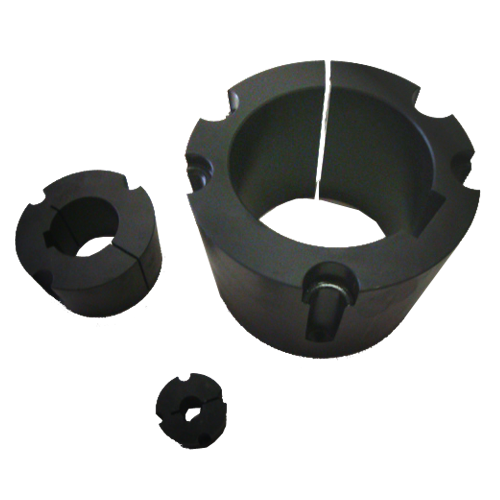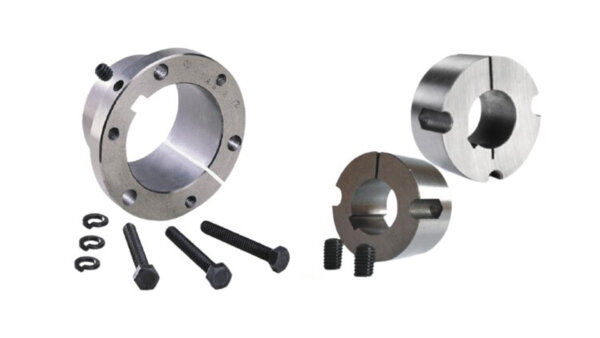
Are there guidelines for lubricating pulley bushings, and what lubricants are recommended?
Yes, there are guidelines for lubricating pulley bushings, and specific lubricants are recommended to ensure proper operation and longevity of the bushings. Here are some general guidelines and recommendations:
- Manufacturer’s Recommendations: The best source of information on lubricating pulley bushings is the manufacturer of the bushing itself. The manufacturer typically provides guidelines and recommendations regarding the lubrication requirements for their specific bushing products. These recommendations may be available in the product documentation, installation manuals, or technical specifications provided by the manufacturer. It is important to follow the manufacturer’s guidelines to ensure optimal performance.
- Cleanliness: Before lubricating pulley bushings, it is crucial to ensure that the bushings and the surrounding area are clean. Remove any dirt, debris, or old lubricant residues from the bushings and the shaft. Cleanliness helps to prevent contamination and ensures proper lubricant distribution.
- Lubricant Type: The choice of lubricant depends on factors such as the bushing material, operating conditions, temperature, and load. Common lubricant types used for pulley bushings include grease and oil. Grease is often preferred for its ability to provide long-lasting lubrication, while oil may be used for applications with high speeds or specific requirements. It is recommended to consult the manufacturer’s guidelines or contact them directly to determine the appropriate lubricant type for the specific bushing.
- Appropriate Lubricant Grade: Lubricants come in different grades or viscosities, and the appropriate grade depends on the operating conditions. Higher viscosities are generally suitable for heavy-duty applications or higher loads, while lower viscosities are used for lighter loads or high-speed applications. The manufacturer’s recommendations or technical documentation can provide guidance on the appropriate lubricant grade for the specific application.
- Lubrication Interval: Establishing a regular lubrication schedule is important to maintain optimal performance of pulley bushings. The lubrication interval depends on factors such as operating conditions, loads, and the type of lubricant used. Some bushings may require lubrication at specific time intervals or operating hours, while others may have longer intervals. The manufacturer’s recommendations should specify the appropriate lubrication interval.
- Proper Lubrication Method: Follow the recommended lubrication method provided by the bushing manufacturer. This may involve applying the lubricant directly to the bushing, using a grease gun or oiler, or following specific instructions for lubricant application. Proper lubrication method ensures effective distribution of the lubricant within the bushing and minimizes excess or inadequate lubrication.
It is important to note that different pulley bushing manufacturers may have specific lubrication requirements or recommendations. Therefore, consulting the manufacturer’s guidelines, product documentation, or contacting their technical support is crucial to ensure proper lubrication practices for the specific pulley bushings being used.

What are the temperature limits of pulley bushings, and how does it affect their performance?
The temperature limits of pulley bushings depend on various factors, including the materials used in their construction and the specific application requirements. Pulley bushings are typically designed to operate within certain temperature ranges to ensure their performance, durability, and longevity. Here’s an overview of the temperature limits and how they can affect the performance of pulley bushings:
- Material Compatibility: Different materials used in pulley bushings have varying temperature limits. Common bushing materials include metal alloys, plastics, and composite materials. Each material has its own thermal properties and can withstand different temperature ranges. It is important to consult the manufacturer’s documentation or specifications to determine the temperature limits of specific bushing materials.
- High-Temperature Performance: When pulley bushings are exposed to high temperatures beyond their recommended limits, it can lead to various performance issues. For instance, excessive heat can cause the bushing material to soften, deform, or lose its structural integrity. This can result in increased friction, accelerated wear, and reduced load-carrying capacity. Additionally, high temperatures can affect the lubrication properties of the bushing, causing lubricants to break down or evaporate more quickly, leading to inadequate lubrication and increased friction.
- Low-Temperature Performance: Similarly, extremely low temperatures can also impact the performance of pulley bushings. Some materials used in bushings may become brittle or less flexible in cold environments, which can increase the risk of cracking or failure under load. Cold temperatures can also affect the lubricant properties, causing it to thicken or become less effective in reducing friction. It is important to consider the minimum temperature limits of bushing materials to ensure their suitability for specific cold-temperature applications.
- Thermal Expansion: Temperature changes can cause materials to expand or contract. This phenomenon, known as thermal expansion, can affect the dimensional stability of pulley bushings. If the bushing material and the mating components have different coefficients of thermal expansion, significant temperature variations can lead to misalignment or interference between the bushing and the shaft. This can result in increased friction, wear, and potential damage to the bushing or the pulley system.
- Application Considerations: The temperature limits of pulley bushings should be considered in the context of the specific application requirements. Factors such as the operating environment, the presence of heat sources or cooling mechanisms, and the duration of exposure to extreme temperatures should be taken into account. In some cases, additional cooling measures or insulation may be necessary to protect the bushings and ensure optimal performance.
It is important to note that the temperature limits provided by bushing manufacturers are general guidelines, and the actual performance may vary depending on the specific conditions and application parameters. Consulting the manufacturer’s documentation, technical specifications, or contacting their customer support can provide more accurate information on the temperature limits and their impact on the performance of pulley bushings.

Can I get recommendations for pulley bushings with high wear resistance?
If you are looking for pulley bushings with high wear resistance, there are several materials that are known for their excellent wear properties. Here are some recommendations:
1. Bronze Bushings:
– Bronze bushings, particularly those made from materials such as phosphor bronze or aluminum bronze, are known for their exceptional wear resistance. They have good load-bearing capabilities and are suitable for various applications, including pulley systems.
– Bronze bushings are self-lubricating, which helps reduce friction and wear. They are commonly used in heavy-duty applications where high wear resistance is required, such as in mining, construction, and industrial machinery.
2. Composite Bushings:
– Composite bushings, also known as polymer bushings, are another option for high wear resistance. They are typically made from materials such as PTFE (polytetrafluoroethylene) or other reinforced polymers.
– Composite bushings offer low friction and excellent wear characteristics. They are self-lubricating, reducing the need for additional lubrication in the pulley system. These bushings are commonly used in applications where resistance to wear, chemicals, and moisture is essential.
3. Ceramic Bushings:
– Ceramic bushings are known for their exceptional wear and corrosion resistance. They are made from materials such as silicon nitride or zirconia.
– Ceramic bushings have high hardness, low friction, and excellent dimensional stability. They are often used in demanding applications where wear resistance is critical, such as high-speed or high-temperature pulley systems.
4. Steel or Stainless Steel Bushings:
– Steel or stainless steel bushings can also offer good wear resistance, especially when combined with proper lubrication. They are commonly used in applications where high strength and durability are required.
– These bushings can be beneficial in pulley systems that operate in harsh environments, where resistance to corrosion, abrasion, and fatigue is crucial.
5. Consult with Experts:
– It is recommended to consult with experts, such as pulley manufacturers, suppliers, or engineers, who have experience in selecting bushings with high wear resistance.
– They can provide guidance and specific recommendations based on your application requirements, considering factors such as load capacity, operating conditions, and environmental factors.
When selecting pulley bushings with high wear resistance, consider the specific needs and demands of your application. Factors such as load capacity, operating speeds, temperature range, and environmental conditions should be taken into account. By choosing the appropriate materials and seeking expert advice, you can ensure that the pulley bushings provide optimal wear resistance and contribute to the longevity and performance of your pulley system.


editor by CX 2024-04-09
